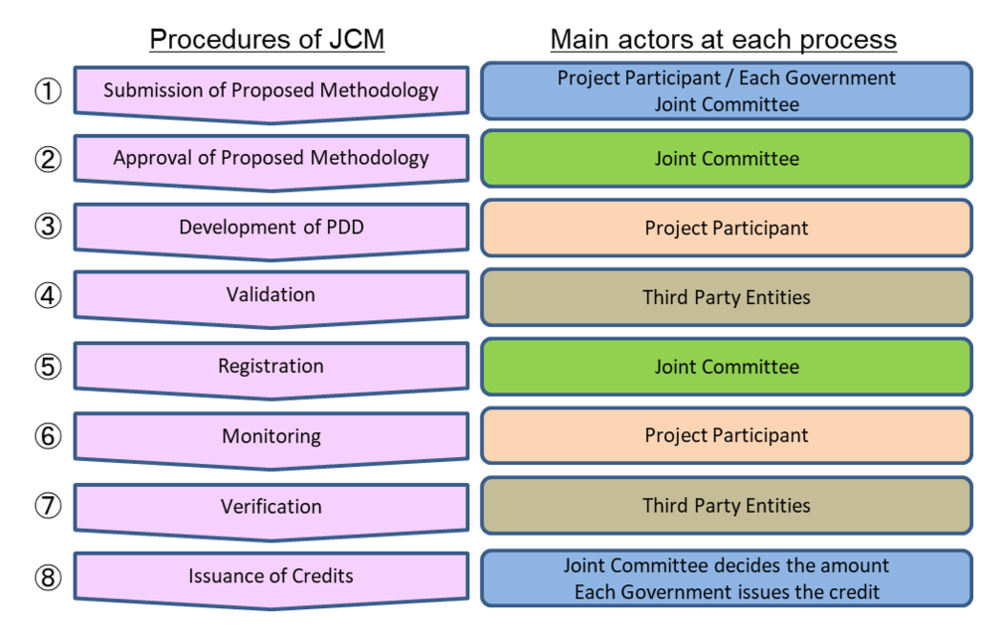Joint Crediting Mechanism (JCM)

Basic concept of the Joint Crediting Mechanism (JCM) is to:
- Facilitate the diffusion of leading low carbon technologies, products, systems, services, and infrastructure as well as the implementation of GHG mitigation actions, which contribute to sustainable development actions and programmes of developing countries.
- Evaluate the contributions from Japan to GHG emission reductions or removals in a quantitative manner and use them to achieve Japan’s emission reduction target.
- Contribute to the ultimate objective of the United Nations Framework Convention on Climate Change by facilitating global actions for GHG emission reductions or removals.
To facilitate the implementation of JCM projects in the Kingdom of Saudi Arabia, a Joint Committee (JC) was established on 4th October 2015 consisting of representatives from the Governments of the Kingdom of Saudi Arabia and Japan. The JC develops rules and guidelines necessary for the implementation of the JCM and it determines either to approve or reject the proposed methodologies, as well as develops JCM methodologies. The JC designates the third-party entities (TPEs) and decides on whether to register JCM projects which have been validated by the TPEs. The Governments of the Kingdom of Saudi Arabia and Japan each establishes and maintains a registry and based on notification for issuance of credits by the JC, each Government issues the notified amount of credits to its registry.
The Paris Agreement encourages Parties to use market and non-market instruments to implement their contributions in order to achieve their national development objectives. It recognises and encourages bottom-up market approaches to address climate change issues instead of top-down strategies. The provision for Joint Voluntary Cooperation (JVC) by Parties allows Parties to work voluntarily together in a cost-effective manner and consistent with national development objectives and priorities. The Joint Crediting Mechanism (JCM) with Japan is an example of such voluntary cooperative arrangements.
Features of the JCM
The features of the JCM are as follows:
- The JCM starts its operation as a non-tradable credit type mechanism.
- Both Governments continue consultation for the transition to a tradable credit type mechanism and reach a conclusion at the earliest possible timing, taking account of implementation of the JCM.
- The JCM aims for concrete contributions to assisting adaptation efforts of developing countries after the JCM is converted to the tradable credit type mechanism.
- The JCM covers the period until a possible coming into effect of a new international framework under the UNFCCC.
Features of the JCM Project Cycle is as follows

